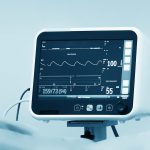With the new generation of medical devices, the software content in the devices is ever increasing.Software as a Medical Device (SaMD) brings new opportunities and new challenges for both device companies and for regulators, and is an area where new regulatory frameworks are being followed to ensure patient safety and clinical effectiveness.
What is SaMD?
According to the International Medical Device Regulators Forum (IMDRF) Software as a Medical Device (SaMD) is defined as “software intended to be used for one or more medical purposes that perform these purposes without being part of a hardware medical device”.
Key Notes:
- SaMD may be interfaced with other medical devices, including hardware medical devices, and other SaMD software, as well as general purpose software.
- SaMD is a medical device and includes In vitro diagnostic (IVD) medical device.
- SaMD is capable of running on general purpose (non-medical purpose) computing platforms.
- “without being part of” means software not necessary for a hardware medical device to achieve its intended medical purpose.
- SaMD may be used in combination (e.g., as a module) with other products including medical devices.
- Mobile apps that meet the definition above are considered SaMD.
Benefits of SaMD
Within the general field of healthcare, SaMD is a particularly new category of software resource with a specialized role. SaMD includes applications across the major domains i.e., screening and diagnosis; monitoring and alerting, chronic condition and disease management and digital therapeutics. SaMD manufacturers are using Artificial intelligence and machine learning technologies to innovate their products to better assist health care providers, improve patient care and save time.
Main characteristics of SaMD include:
- Better health outcomes powered by collection of large amount of critical data
- Faster, production and feedback to drive faster innovation in shorter time
- State-of-the-art SaMD platforms can enhance the delivery and administration of care, reduce costs, and improve health outcomes
- Ensure consistency and accuracy of data; enable remote diagnosis
- Aid interoperability and make preventive practices efficient
- Potential to transform healthcare service systems by increasing its safety, quality and overall efficiency
Challenges of SaMD
While networking medical devices may be a welcome evolution of Connected Health innovation, it does add greater complexity and concerns around regulatory requirements. One of the biggest challenges involves the lack of a unified framework for medical device software development and to understand the current state of the development processes. The preferred approach to SaMD manufacturers is to implement best practices and fast feedback loops suggested by authorities in order to develop regulatory compliant SaMD.
As SaMD generates its own unique regulatory requirements, manufacturers need to understand “how the qualification and classification” apply to their products when a part/ module of medical device contains software; and apply appropriate regulatory strategy for global compliance.
SaMD Lifecycle
As specified in IEC 62304 standard for life-cycle development of medical device software, SaMD developers should implement arisk-based decision model defines testing requirements. Highlighting below major principles that promote safety relevant to SaMD:
- Risk management
- Quality management
- Methodical and systematic systems engineering according to best industry practices
- Software development management
- Clinical evidence for safety and effectiveness
- Specific documentation evidence as per applicable standards and guidance
- Mechanisms employed for post-market control, including traceability of end-users
- Framework for regulatory compliance and maintaining the security and privacy of the health information
Conclusion
As SaMD provides unique features, its technology becomes cheaper, more accessible, and more sophisticated and able to leverage connectivity to devices as well as users for continuous safety and effectiveness. Though it may be challenging in comparison to other software devices, it is likely to play an increasingly important role in health care delivery, personalized medicine, and medical research. In order to get its full benefits, manufacturers should make risk-based criteria and be ready to compatible with the radically changing regulations to accommodate the rapidly evolving SaMD’ technology.



